You already know that to leave your curls defined, loose and with volume, it is necessary to maintain a routine of care. From the time of washing to completion, you need to know what kind of nutrients your hair needs and what products are indicated. If you still don’t know which moisturizing creams work best with your hair, try some tests and analyze the result for a month (some hair take longer to adapt to the product, don’t give up easily).
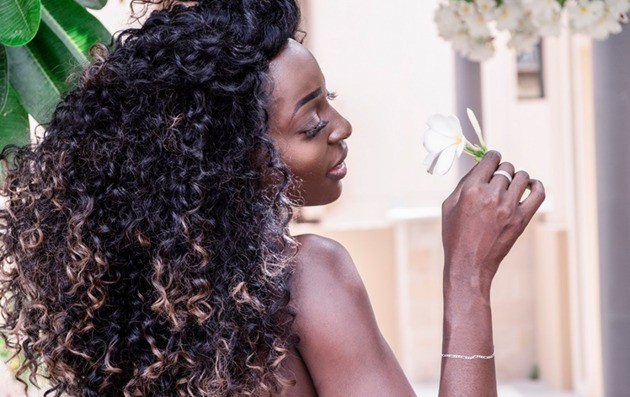
My hair needs hydration?
If you maintain a routine of assiduous treatments through the hair schedule, your hair still looks like resected, lacklustre, with frizz and it is embarrassing with ease, it’s a sign he needs more hydrations.
Generally, this is the stage that is most repeated in the capillary schedule, followed by nutrition and, less frequently, reconstruction. Many people choose to do this because the hair loses water very easily, not only in chemical processes, but with the action of wind, sun, dryer and iron, pollution and other external factors common in our day to day.
If the hair is very damagedhydrate 2 to 3 times a week at 48-hour intervals. If the minor injuriesOne to two hydrations a week is all it takes.
A very popular test to find out if your hair needs hydration is to loosen a strand of hair in a large 3/4 cup of water. If the strand sink to the bottom of the glass, a sign that it’s time to hydrate.
Choosing the right product (industrial and natural) to hydrate curly hair
There are thousands of products on the market offering deep hydration for hair, but how do you know if they really do their job? Since there are so many options for decorating names, we’ll help you choose the right product through the label. That’s right! Time to analyze the ingredients in the moisturizing cream and see if they’re right for you.
These tips will also help you make more powerful home hydration. So you can choose which ingredients to mix for a satisfying and lasting result.
Botanical extracts, fruits or vitamins
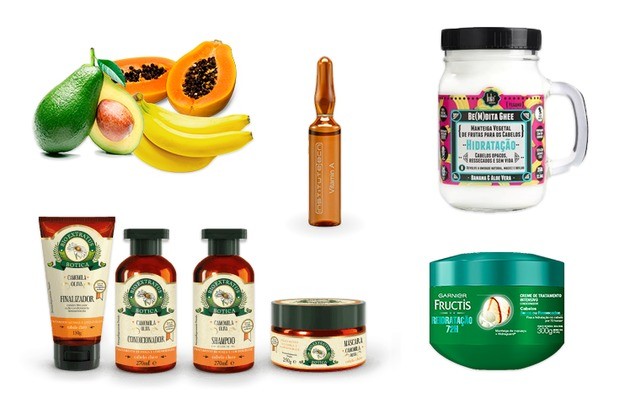
These three components are the most used in hydration because they absorb moisture, retain the water in the yarn and keep it hydrated, with softness and malleability. For a more effective result, prefer products (or home mixes) that carry one or more of these ingredients, combined with others that are following.
How to use it?
In this case, the ideal is to purchase products that already have these components in their formula, because they are more powerful when combined with other moisturizing actives. You can also add some fruit beaten in the blender to your favorite cream, such as avocado, which has strong nutritional power.
There is also the option of adding vitamin ampoules, but some hairdressers say that not all creams are compatible with the ampoules and the substances do not mix.
Chocolate, honey or sugar
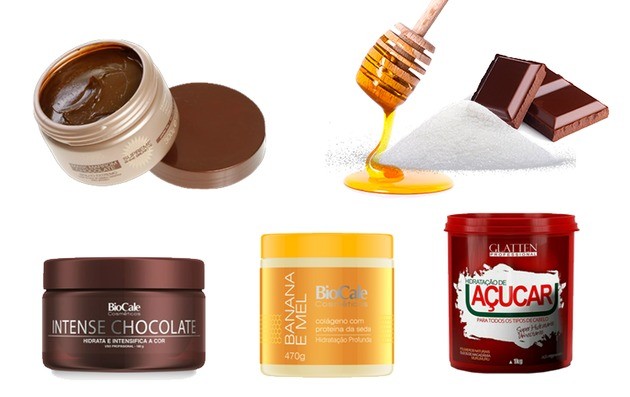
Remember the chocolate brush fever? No wonder cocoa has been successful in the beauty industry, it promises softness, light reduction in volume, shine and maintenance of yarn elasticity (because it stimulates the production of collagen). Honey and sugar have similar effects and the three components can be combined with each other, or with the other ingredients mentioned here.
How to use it?
Honey can always be added to your hydration mask. As it is a natural product, there is no contraindication, but be aware of the amount. Keep the ratio of one spoon (soup) to three spoons of cream.
Sugar and chocolate are more delicate ingredients to handle, you can’t use any of those from the supermarket. Give preference to products that already have these ingredients in their formula.
Big Chop: Check out all about this technique and before and after photos
D-Pantenol
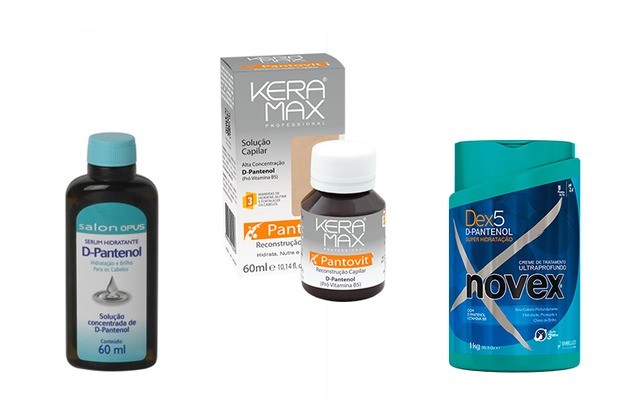
This is one of the most famous actives when it comes to hydration. Not just in the hair, but in the skin. You know sweetheart Bepantol? Yeah, he’s got Pantenol in his formula.
D-Pantenol is a vitamin and is present in our skin and hair. It is essential for health because it helps to keep the skin soft, firm and healing quickly. In hair, it provides long-lasting hydration, softness, shine and combats split ends.
How to use it?
In cosmetic stores there is already an option to buy liquid D-Pantenol and indications of use. Generally, it is mixed with common moisturizing cream to enhance the effects. If your cream already has D-Pantenol in the formula, it is best not to add more, so as not to weigh the threads.
Hydration with mayonnaise restores softness to the hair. Learn!
Babosa (aloe vera)
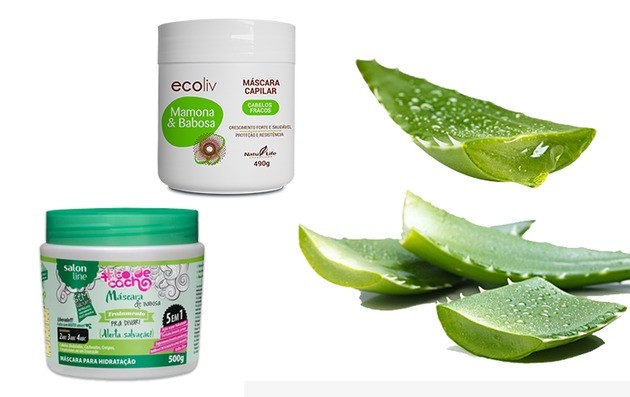
Grandma’s tip! Who’s ever heard of drooling being good for strands, huh? This plant so easy to find has the power to hydrate, regenerate and help combat the fall of threads. It acts as a natural antioxidant.
How to use it?
In addition to the products available with this asset, we can make the classic application of babosa. Open a sheet of slime and knead its contents with a fork, until it becomes more pasty. Wash your hair with your usual shampoo (or anti-residue) and then (without applying conditioner) apply the slime to the entire strand, lock by lock. Put on a plastic cap and leave it on for 30 minutes. Then continue washing, removing the slime and applying your favorite conditioner to help seal the cuticles.
The best hair colors for black women
Gelatin
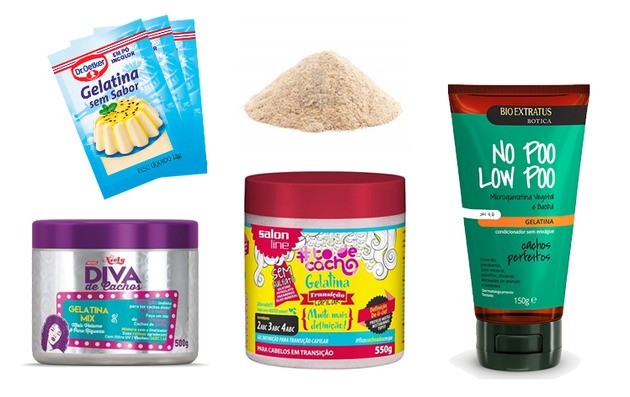
Avocado hydration: know the benefits for your hair
Besides being good for health and skin, the high content of sugar and collagen in the gelatin restores shine and softness to the hair. And you don’t even have to spend much for that.
Collagen is super important, not only for elasticity, but because it retains moisture in the yarn and prevents it from drying out. Sugar, in turn, has the function of sealing the cuticles, which leaves the hair shiny and protected from external agents. Besides sugar and collagen, gelatin also has a series of amino acids with moisturizing action, such as proline and glycine.
How to use it?
If you cannot find any gelatine products on the market, buy a colorless gelatine and mix the powder in a moisturizing cream of your choice. The ideal ratio is half a pack of gelatine to two tablespoons of moisturizer. If you prefer, add a small scoop of 100% vegetable oil (such as extra virgin olive oil, coconut oil or castor oil).
Capillary transition: see how to send the chemistry away from your wires
Olive Butter
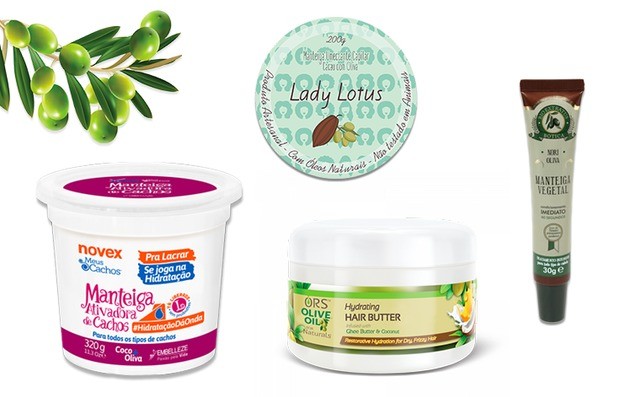
Fitting: learn this amazing trick to define curls
A powerful ally in long-term hydration, olive butter is a product very similar to the nutrients in olive oil, and it can serve both the hydration and nutrition phases. It is nutritious, emollient, rich in antioxidants and has vitamins A, B1, B2, C, D, E and K.
How to use it?
Olive butter is harder to find than olive oil. Generally its cost is also higher, but in compensation it is easier to apply and can last for a long time because it is not applied in large quantities. Obey the instructions for use of the label.
See also:
Curly hair: necessary care and better cuts
Tips for you to never have spiky, brittle hair again
Hair Botox: What is it? How does it work? Know everything!


